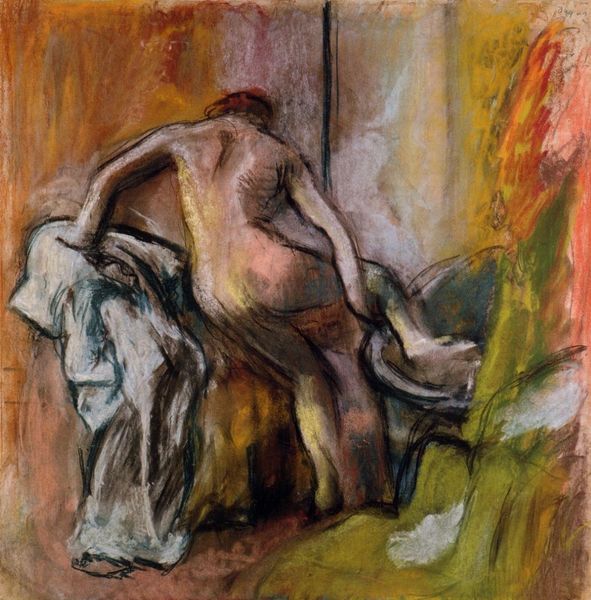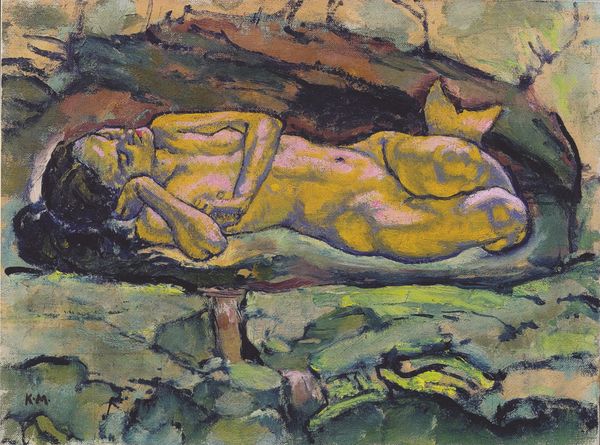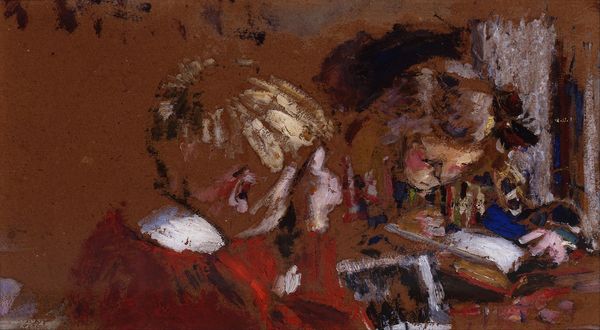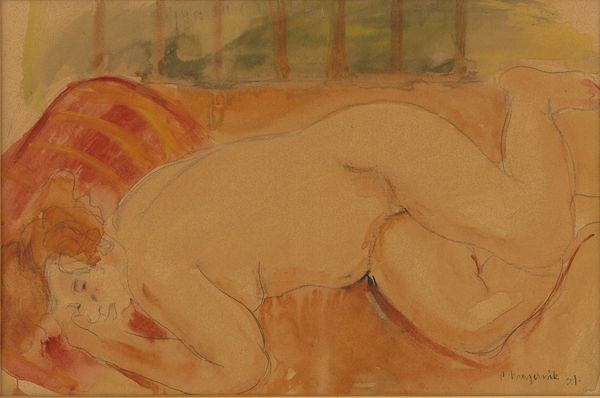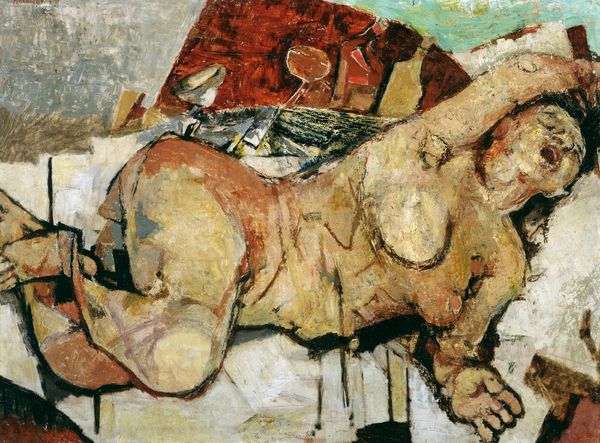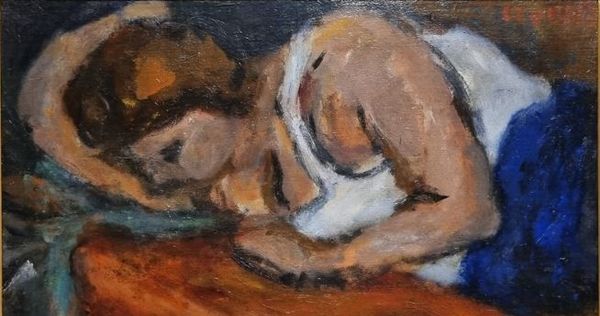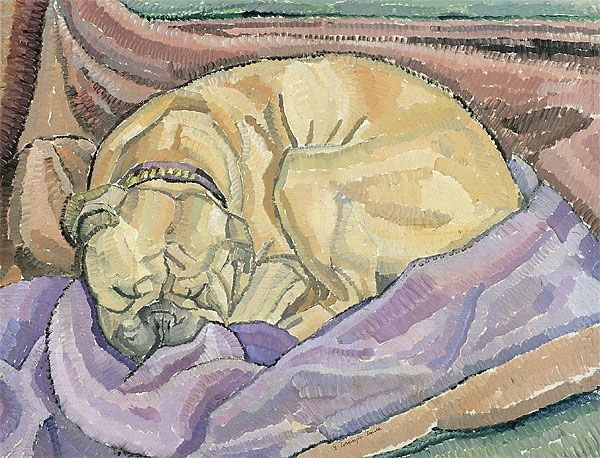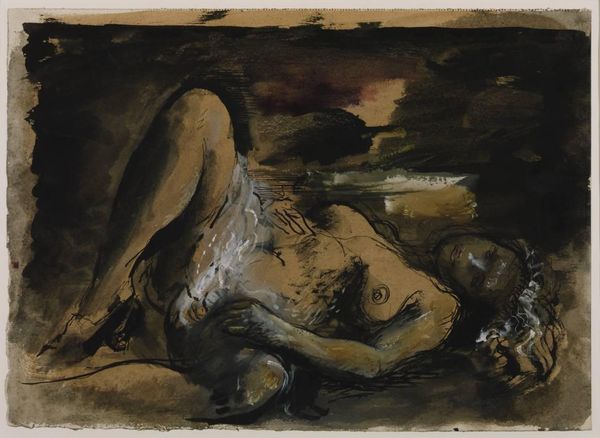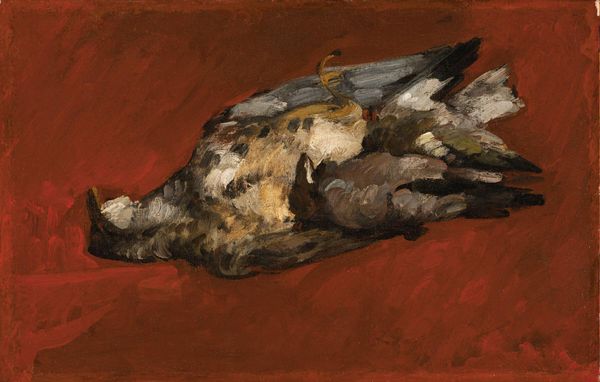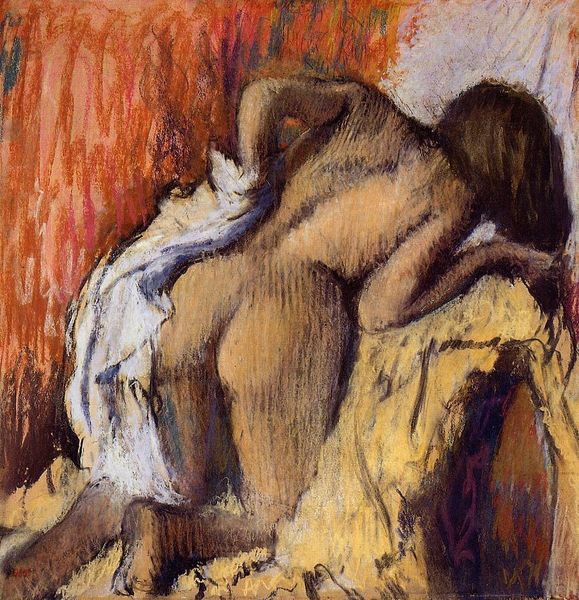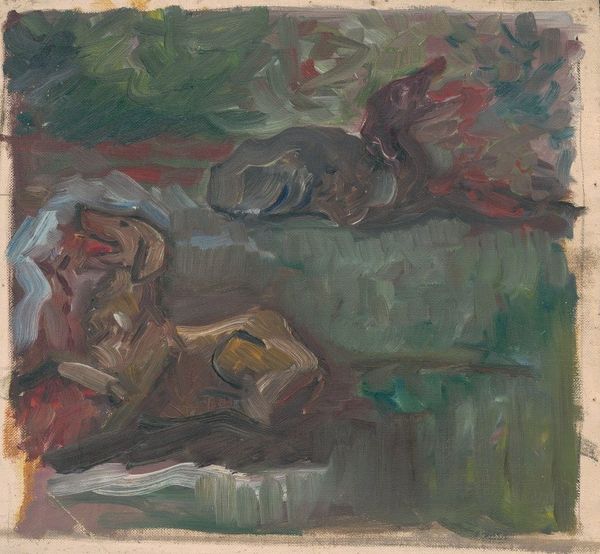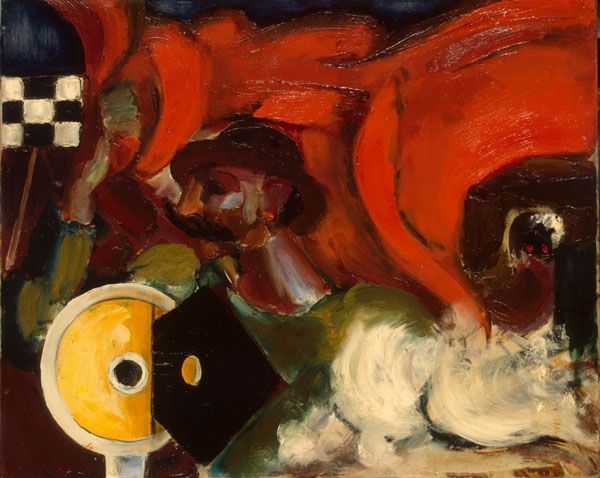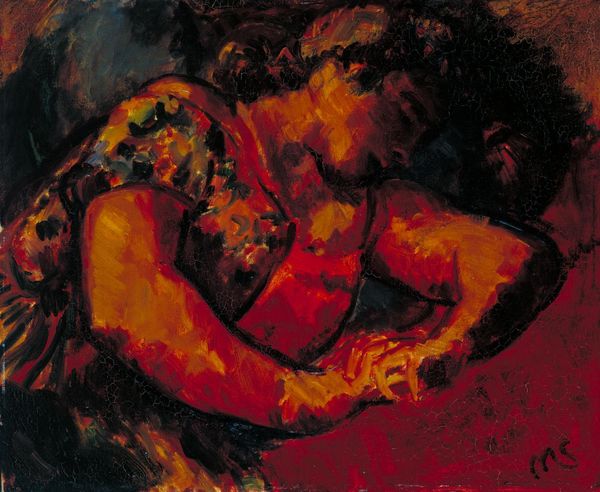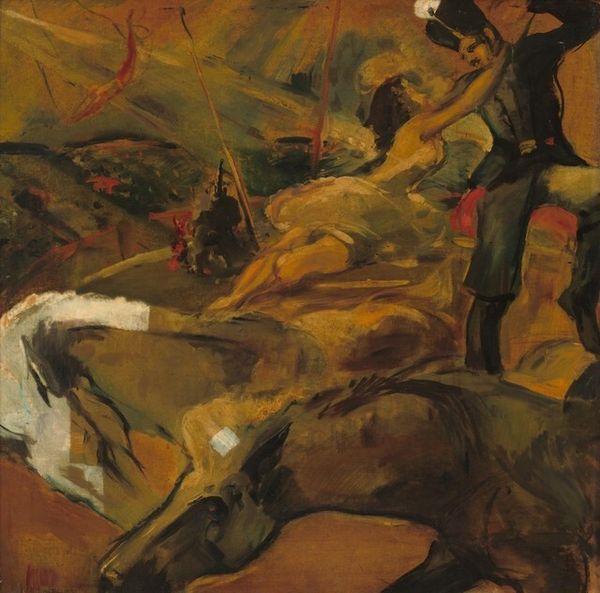
Dimensions: support: 648 x 806 mm frame: 850 x 1020 x 85
Copyright: By permission of the estate of the artist | CC-BY-NC-ND 4.0 DEED, Photo: Tate
Editor: This is Sir Matthew Smith’s "Model Turning," housed at the Tate. The impasto is so thick! It almost feels violent, the way the paint is applied. What social narratives do you see surfacing here? Curator: The aggressive application of paint can be interpreted as a challenge to the demure presentation of the female nude prevalent in earlier art historical periods. How does the model's pose disrupt conventional expectations of the female form? Editor: I see what you mean; it's not idealized or passive. It feels…raw. Curator: Exactly. Smith's use of colour and form confronts us with a visceral representation of the body, forcing a dialogue about the objectification and agency of women in art. It has definitely given me some food for thought. Editor: Me too!
Comments
Join the conversation
Join millions of artists and users on Artera today and experience the ultimate creative platform.
tate 6 months ago
⋮
The paintings of the nude made by Smith in the winter of 1923-4 in Paris were a breakthrough to a new facility with colour. The use of such a harmony is French in style, and Smith was one of very few British artists to paint in this way.Here the dark skinned model is dressed only in a red skirt, pulled up above her knees, and lies on a couch on blue and mauve cushions. The black background and absence of light give a feeling of enclosure, cutting out anything but the confrontation with the nude, made dramatic by the vigorous brushstrokes and unstable pose. The body is 'modelled' in colour, like the surface of a sculpture in clay - not by outline or flat areas, but with the ups and downs along the surface. Gallery label, September 2004
